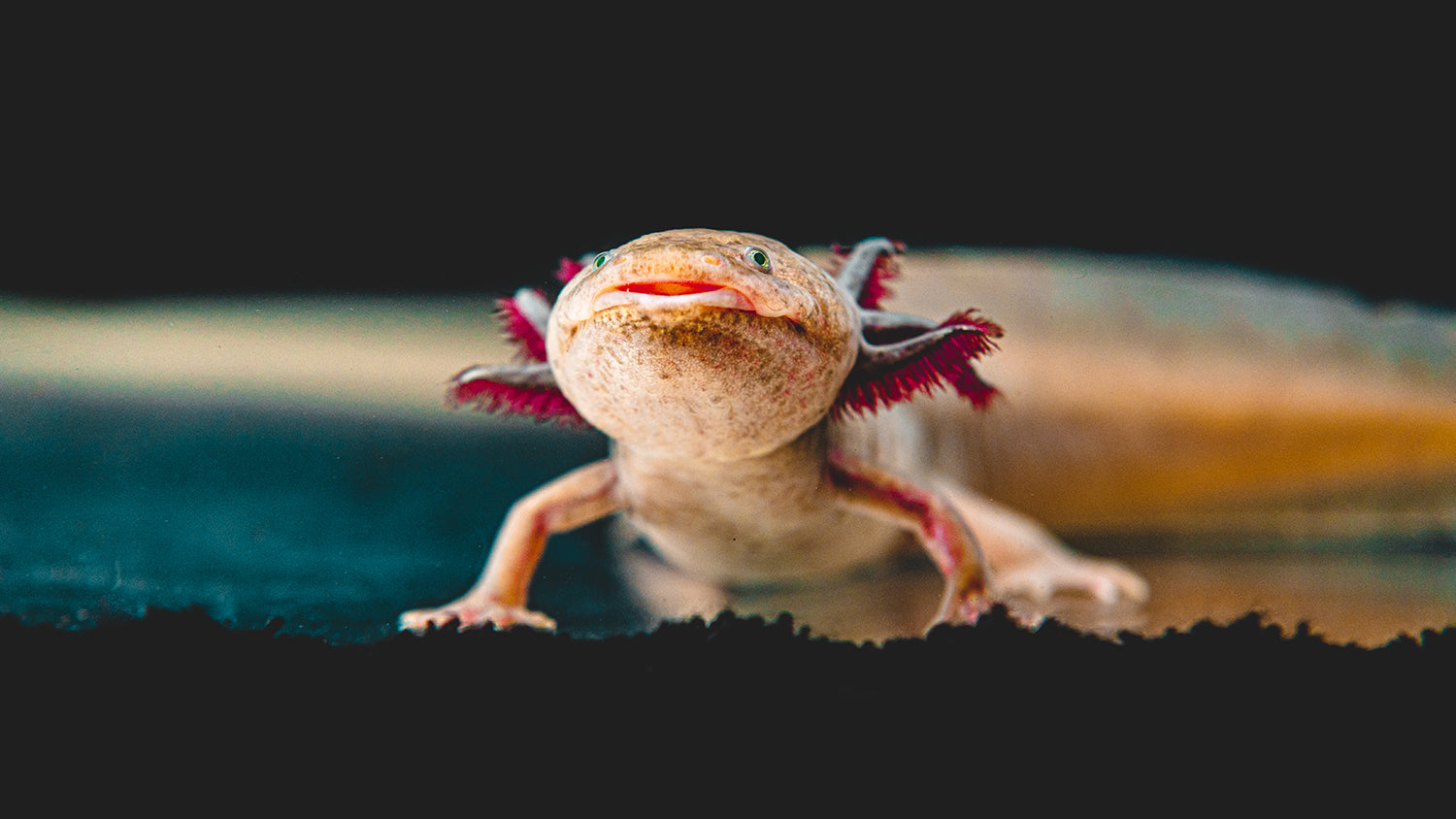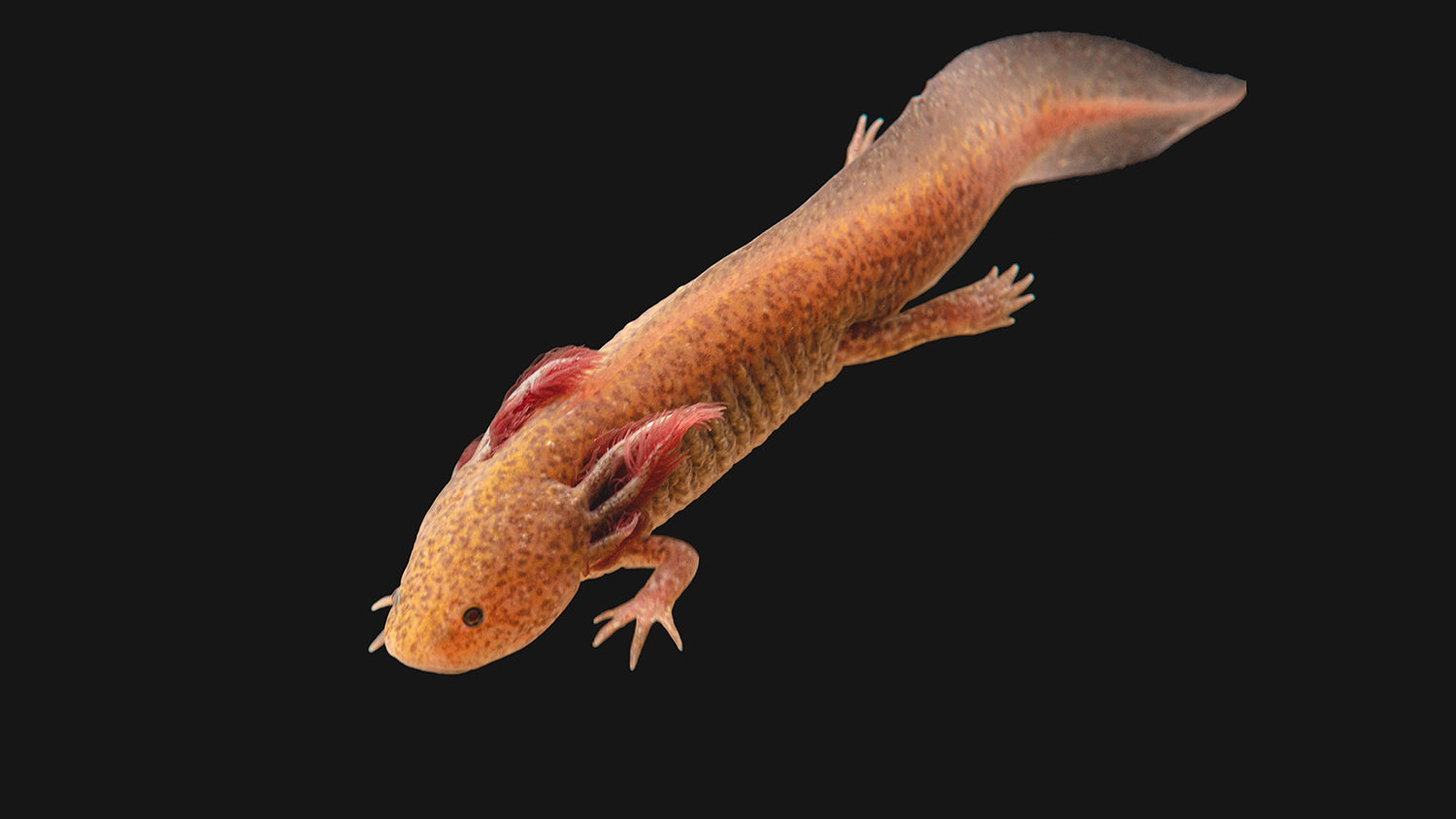The short answer is that, until an axolotl is sexually mature, it’s not possible to reliably tell whether an axolotl is male or female. Once they reach sexual maturity, though, it’s fairly easy to do so by observing their cloaca!
When is my axolotl sexually mature?
The first step to determining an axolotl’s sex is to make sure it’s mature enough that you’ll be able to tell!
Axolotls generally reach sexual maturity between 6 and 12 months of age. Before this time, it’s very unlikely that your axolotl will be mature enough to determine its sex. Maturation can be partially influenced by water temperature and the diet of the axolotl, but it’s not recommended to try to determine your axolotl’s sex before it’s at least 6 months old.
You can look for certain physical markers to determine that your axolotl is sexually mature. Size is a good indicator—a mature axolotl will be approaching 6-8 inches in length, though they can grow considerably larger (our own ‘Glob’ is proof of that—she’s 13 inches long!).
Another physical marker of sexual maturity is that an axolotl’s toes will start to change color. Lighter-colored axolotls, like leucistic axolotls, have toes that turn a darker hue, while some darker-shaded axolotls’ toes can grow lighter. It will look a little like claws or nail polish, but is, in fact, a sign of sexual maturity.
How to Determine Your Axolotl’s Sex
One you’ve determined that your axolotl has reached sexual maturity, all that remains is to determine its sex. This is fairly easy to accomplish!
The easiest way is to look for an enlarged cloaca. Both males and female axolotls have a cloaca (genital area), but the cloacae of male axolotls are larger than those of females. Look just behind your axolotl’s back legs, under its tale. If there is a definite, rounded bulge, your axolotl is a male!
Note that this method can be misleading—a female axolotl who needs to defecate can have a temporarily swollen cloaca, which might make her look like a male. However, with females, the temporary swelling should go away once the axolotl has defecated. If you check back after a while and it still has a rounded cloaca, it’s a male!
The most obvious way to determine your axolotl's gender is to observe your axolotl during its reproductive cycle, while it is depositing either spermatophores or eggs. If you see spermataphores (sperm cones), your axolotl is a male. If you see eggs, your axolotl is a female. However, this is only the case if you have a breeding pair of axolotls, and is not recommended as a method of determining their sex.
Female axolotls tend to have a rounder shape than males—their bodies are adapted to carry eggs, and you can distinguish male and female axolotls by the shape of their bodies. Females also tend to be slightly larger than males, but that method of determining sex is not recommended—too many factors can determine an axolotl’s size, as mentioned above!
Axolotls are crazy-looking creatures, and we don’t blame you for being curious as to how to determine the sex of your aquatic friend! Hopefully, the information in this article (and the rest of our axolotl tips, tricks and trivia), will make you more knowledgeable and confident when it comes to raising these amazing creatures.





Leave a comment
This site is protected by hCaptcha and the hCaptcha Privacy Policy and Terms of Service apply.